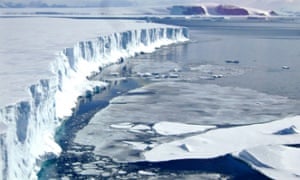The Big Melt - Is Antarctica gaining ice? No, it's an Urban Myth
Some people say "The ice sheets in Antarctica are growing".
This is very misleading.
First, the Antarctic has ice on land and in the sea.

The Antarctic is a continent covered by ice, unlike the ocean in the Arctic.
The sea ice surrounding Antarctica melts almost to the coast each summer.

The winter sea ice has increased by around 1% over the last few decades.
This is due to complex processes.
It is linked to melting of the land ice on Antarctica…..
Antarctica is losing very large amounts of ice from its ice sheets and glaciers.
It is linked to melting of the land ice on Antarctica…..
Antarctica is losing very large amounts of ice from its ice sheets and glaciers.
Here is an outline of what is happening in the seas around Antarctica......
- Seawater does not freeze until around minus 2 degrees C because it is salty.
- This effect of salt, of course, is used to help defrost roads.
- The meltwater off Antarctica’s ice sheets is freshwater.
- Freshwater has a low density, so it forms a layer on top of the sea.
- Freshwater freezes (of course) at zero degrees C.
- So the top layer freezes more easily.
- Also windchill helps to freeze that top layer.
Here is a useful comparison of Antarctic and Arctic sea ice ……
For example, the largest ice shelf in the Antarctic peninsula is being thinned by warmer seas and warmer air.
Between 1998 to 2012 the Larsen C ice shelf lost an average of four metres of ice.

The leading edge of the remaining part of the Larsen B ice shelf Photograph: HO/REUTERS

